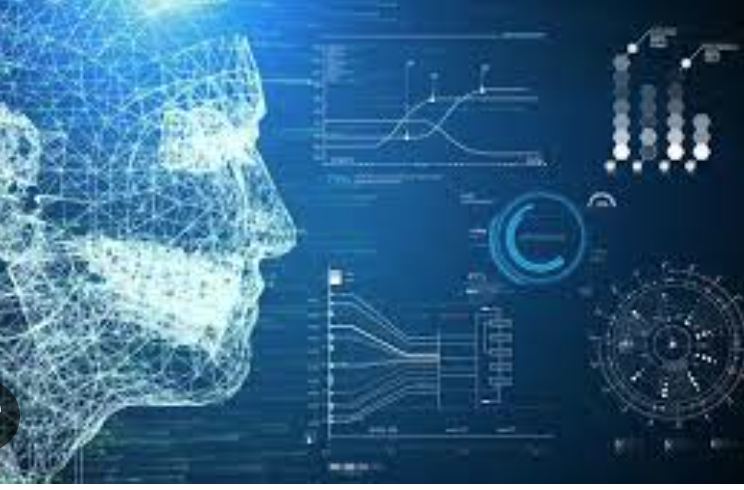“Unlocking Academic Possibilities with AI & ML: Fueling the Future of Research!”
Introduction
In recent years, Artificial Intelligence (AI) and Machine Learning (ML) have become increasingly popular tools for academic research. These technologies offer powerful new methods for collecting, analyzing, and interpreting data, enabling researchers to gain deeper insights into their data and draw new conclusions. AI and ML are helping to advance research in a wide variety of fields, from medical science to economics. They are being used to identify patterns and trends in data, create predictive models, and find new solutions to problems. AI and ML are also being used to optimize existing processes and create new ones, as well as to improve the accuracy of results. As AI and ML continue to develop, they will become increasingly important tools for academic researchers, enabling them to achieve new levels of accuracy and efficiency.
AI and Machine Learning in Academic Research: What’s the Status Quo?
The past decade has seen a rapid rise in the use of AI and machine learning in academic research. As these technologies become more accessible and affordable, they are increasingly being used to advance the understanding of complex phenomena, solve difficult problems, and gain insight into new areas of study. AI and machine learning have been used to develop models that can predict future outcomes, analyze large datasets, and provide researchers with valuable insights about the world around them.
As the capabilities of AI and machine learning continue to expand, the role of these technologies in academic research is becoming increasingly important. AI and machine learning can be used to identify patterns and trends in data, automate processes and workflows, and identify key areas of research. They can also be used to improve the accuracy and speed of experiments, and to develop new ways of analysing data.
At present, AI and machine learning are being used in a wide range of academic research areas. For example, they are being used to develop models to predict the behaviour of complex systems, to study the effects of climate change, and to analyse medical data to identify potential treatments for diseases. AI and machine learning are also being used in the fields of robotics, natural language processing, and computer vision, to name just a few.
The use of AI and machine learning in academic research is likely to continue to grow in the years ahead. As the technology becomes more widely available and affordable, researchers will continue to find new ways to leverage its power to gain new insights and solve complex problems. As a result, AI and machine learning are likely to become increasingly important components of the academic research landscape.
Exploring How AI and Machine Learning Can Be Used to Enhance Academic Research
AI and machine learning have become increasingly important in the world of academic research. In recent years, they have been used to analyze data, automate processes, and even create new insights. AI and machine learning can be used to enhance academic research in a number of ways.
Firstly, AI and machine learning can be used to analyze large amounts of data quickly and accurately. AI can be used to identify trends and patterns in large datasets, which can be used to inform research decisions. In addition, AI can be used to detect anomalies in data, which can be used to identify areas for further exploration. This can improve the accuracy of research results, as well as save time and resources.
Secondly, AI and machine learning can be used to automate tedious tasks. Many research tasks involve performing repetitive calculations or analyzing large amounts of data. AI and machine learning can help automate these tasks, freeing up researchers to focus on more important tasks. This can improve the efficiency of research projects, as well as reduce the amount of time needed to complete them.
Thirdly, AI and machine learning can be used to create new insights. AI and machine learning algorithms can be used to identify correlations and relationships between different datasets. This can help researchers identify previously unknown connections, which can lead to new discoveries and insights.
In summary, AI and machine learning can be used to enhance academic research in a number of ways. They can be used to analyze large datasets quickly and accurately, automate tedious tasks, and create new insights. By leveraging the power of AI and machine learning, researchers can improve the accuracy and efficiency of their projects and uncover new discoveries.
AI and Machine Learning: How They Help Improve the Quality of Academic Research
AI and machine learning are rapidly transforming the academic research landscape. AI and machine learning technologies are increasingly being used to improve the quality of academic research. They are being used to automate tedious tasks, create better models, and enable more powerful data analysis.
AI can automate tedious tasks like data gathering and analysis. It can be used to quickly gather information from a variety of sources, such as the web, databases, and even social media. This can save researchers a lot of time and energy that would have otherwise been spent on manual research. AI can also be used to analyze large amounts of data quickly and accurately. This can help researchers identify patterns and correlations that might not have been noticed otherwise.
Machine learning can be used to create better models for research. For example, machine learning algorithms can be used to predict outcomes from certain events or find relationships between variables. This can help researchers develop better theories and uncover new insights.
Finally, AI and machine learning can enable more powerful data analysis. They can be used to identify trends and patterns in data that would otherwise not be obvious. This can help researchers draw more accurate conclusions from their data, leading to more accurate results.
Overall, AI and machine learning are becoming invaluable tools for academic research. They are helping researchers to save time, create better models, and analyze data more effectively. As these technologies continue to develop, they will continue to be used to improve the quality of academic research.
AI and Machine Learning for Automating Academic Research Tasks
The advancement of artificial intelligence (AI) and machine learning (ML) technologies has enabled automation of academic research tasks. AI and ML technologies allow researchers to streamline and optimize their workflows, freeing up their time and energy to focus on their research’s more nuanced and creative aspects.
AI and ML technologies can assist in many stages of the research process. From generating hypotheses and exploring data to constructing models and generating reports, AI and ML technologies can help automate these activities. AI and ML can be used to help automate the search for relevant literature, which can be time-consuming and labor intensive. AI and ML can also be used to aid in data collection and analysis, reducing the time and effort required for researchers to conduct their studies.
At the same time, AI and ML can be used to assist with the generation of reports and presentations. AI and ML can be used to identify patterns and trends in data, allowing researchers to quickly generate reports that are more accurate and comprehensive. AI and ML can even be used to generate the text of reports, including the introduction, methodology, results and conclusion sections. This can help reduce the time and energy researchers spend on writing reports and presentations.
Finally, AI and ML can be used to automate the peer-review process, helping to reduce the time and effort required to assess the quality of a research paper. AI and ML technologies can be used to identify errors and inconsistencies in a paper, allowing for faster and more accurate peer-reviews.
Overall, AI and ML technologies have the potential to revolutionize the research process, enabling researchers to focus on the most important aspects of their work, while automating mundane and time-consuming tasks. As the technology continues to develop and improve, AI and ML can help researchers spend less time on tedious tasks and more time on their research.
The Impact of AI and Machine Learning on the Future of Academic Research
The emergence of AI and Machine Learning has revolutionized the way academic research is conducted. AI and Machine Learning are technologies that enable computers to effectively process large amounts of data and use complex algorithms to uncover patterns and insights. This technology has the potential to significantly improve the efficiency and accuracy of many research activities, allowing researchers to spend more of their time on the creative aspects of their work.
AI and Machine Learning can aid researchers in two primary ways. First, they can be used to automate the process of collecting and analyzing data. Researchers can use AI-enabled platforms to quickly and easily access the data they need for their research. Additionally, AI-based algorithms can be used to analyze data more accurately and quickly than ever before, enabling researchers to uncover previously unseen relationships and make more informed decisions.
The second way AI and Machine Learning can help researchers is in the writing and publishing of research papers. AI-based technologies can be used to automatically generate articles from raw data. By leveraging natural language processing, these technologies can help researchers to more quickly and accurately communicate their findings. Additionally, AI-based systems can be used to assess the quality of a paper and recommend revisions. This can enable researchers to publish their work faster and with greater accuracy.
In conclusion, AI and Machine Learning are technologies that are transforming the way academic research is conducted. By simplifying the data gathering and analysis process, these technologies can enable researchers to spend more of their time on the creative aspects of their work. Additionally, they can be used to generate articles from raw data and assess the quality of research papers. As AI and Machine Learning become more powerful, they will only further improve the efficiency and accuracy of academic research.
Conclusion
In conclusion, Artificial Intelligence and Machine Learning are revolutionizing the way in which academic research is conducted. AI and ML are enabling researchers to utilize data-driven approaches to analyze large datasets, uncover patterns and correlations, and generate new insights. AI and ML have also enabled researchers to automate tedious tasks, such as data collection and data analysis, freeing up time for them to focus on more complex research endeavors. Finally, AI and ML are helping to push the boundaries of academic research and open up new opportunities for innovative research.


